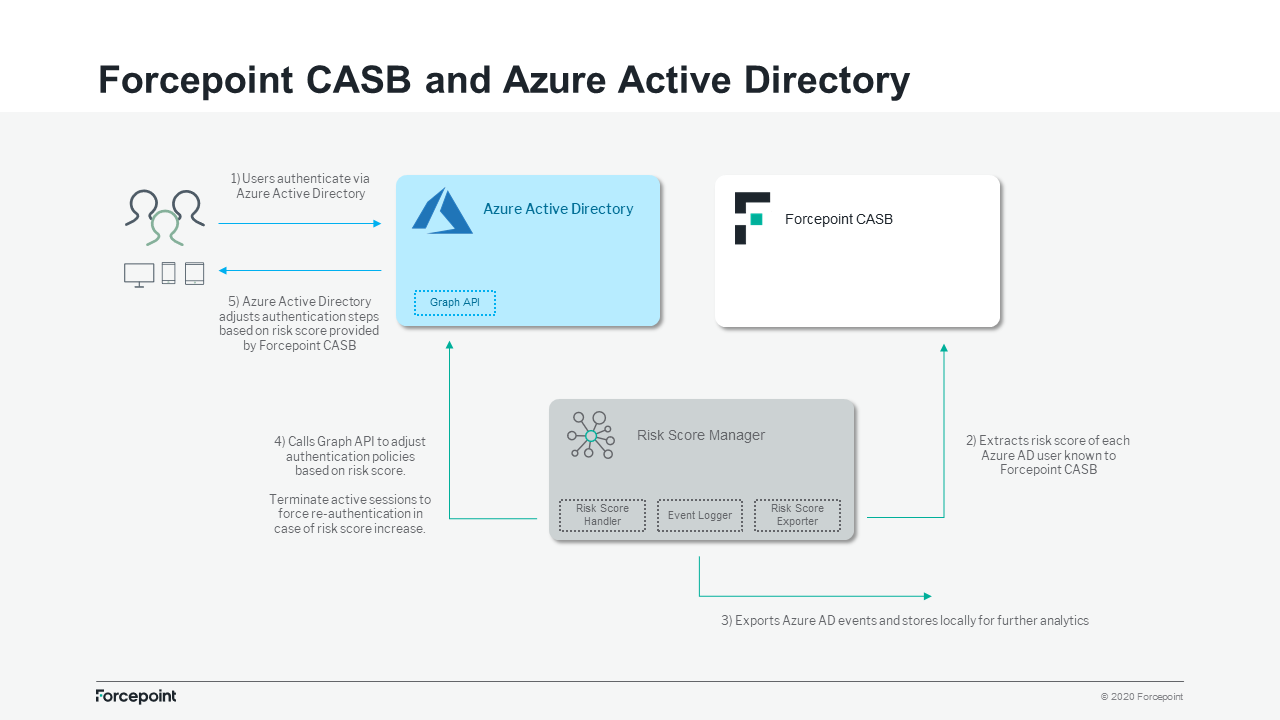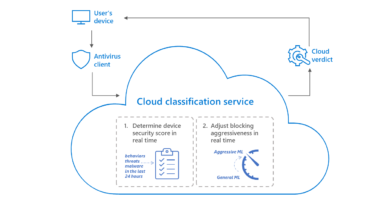Forcepoint and Microsoft: Risk-based access control for the remote workforce
This blog post is part of the Microsoft Intelligence Security Association (MISA) guest blog series. Learn more about MISA here.
Adopting cloud-based services as part of an organization’s digital transformation strategy is no longer optional, it’s a necessity. Last year, only 18 percent of the workforce worked remotely full-time. Today, companies have been forced to accelerate their digital transformation efforts to ensure the safety and well-being of employees. At the same time, organizations cannot afford to sacrifice productivity for the sake of security. With the massive move to online experiences and remote working, comes a new set of challenges—how do you ensure your data, your network, and your employees stay secure, wherever they are?
Forcepoint has integrated with Azure Active Directory (Azure AD) to enhance existing Conditional Access capabilities by orchestrating change in authentication policies dynamically so that every user authenticates with steps aligned to their risk score. Active sessions can be terminated upon risk score increase so that users must re-authenticate using an enhanced sequence of challenges, and users can be temporarily blocked in the case of high risk. Forcepoint risk scores, combined with Azure AD risk, are calculated based on the user’s context, such as location or IP, to help automatically and accurately prioritize the riskiest users. The joint solution enables administrators to protect critical data and leverage the power of automation to prevent data compromise and exfiltration from occurring. By combining the power of Azure AD with Forcepoint security solutions, organizations can scale a risk-adaptive approach to identity and access management and cloud application access without changing their existing infrastructure.
People are the perimeter
Before COVID-19, in our 2020 Forcepoint Cybersecurity Predictions and Trends report, we detailed the shifting emphasis to a “cloud-first” posture by public and private sector organizations alike. There was, and still is, a clear need for organizations to expand their view of network security and begin to understand that their people are the new perimeter. Today, more than ever, it is imperative for businesses to comprehend and to manage the interaction between their two most valuable assets—their people and their data.
Human-centric cybersecurity is about focusing on not just individuals, but how their behaviors evolve over time. Forcepoint risk scores are designed to continuously calculate the level of risk associated with individual behavior in the past, present, and future. Most organizations today will adopt blanket policies to improve their security posture. Even though policies for individuals may have some level of flexibility, most tend to apply policies to all users within a group—regardless of the individual risk profile. This results in unnecessarily complicated steps for low-risk users accessing common applications, and weak authentication challenges for privileged users logging into critical systems. In short, these implementations are likely frustrating your low-risk users by creating barriers to productivity and allowing high-risk users to fly under the radar.
Forcepoint’s mission is to provide enterprises with the tools needed to understand and quickly assess the risk levels of human behavior across their networks and endpoints and take automated action by implementing risk adaptive protection. We offer a portfolio of security solutions designed to quickly and continuously assess the potential of compromised user risk and automatically apply the appropriate protective measures.
Forcepoint + Azure Active Directory = Better together
Forcepoint has partnered with the Azure Active Directory team on a series of integrations designed to provide remote workers secure access to their cloud and legacy on-premise applications. Together, our integrated solutions combine the risk score calculated by Forcepoint’s Cloud Access Security Broker (CASB)—with Azure AD—to apply the appropriate conditional access policies tailored to each individual user risk.

Learn more about the Forcepoint products that integrate with Microsoft Azure, including the technical implementation and demonstrations of how Forcepoint risk adaptive protection influences the conditional access policies of a potentially compromised user:
Give your organization the control it needs to protect critical assets and data by combining Forcepoint with the power of Azure AD today.
About Forcepoint
Forcepoint is a leading user and data protection cybersecurity company, entrusted to safeguard organizations while driving digital transformation and growth. Our solutions adapt in real-time to how people interact with networks, data, and systems. Forcepoint provides secure access solutions without compromising employee productivity. For more information, visit forcepoint.com.
Forcepoint is a member of the Microsoft Intelligent Security Association.
To learn more about the Microsoft Intelligent Security Association (MISA), visit our website where you can learn about the MISA program, product integrations, and find MISA members. Visit the video playlist to learn about the strength of member integrations with Microsoft products.
For more information about Microsoft Security Solutions, visit the Microsoft Security website. Bookmark the Security blog to keep up with our expert coverage of security matters. Also, follow us at @MSFTSecurity for the latest news and updates on cybersecurity.
READ MORE HERE




